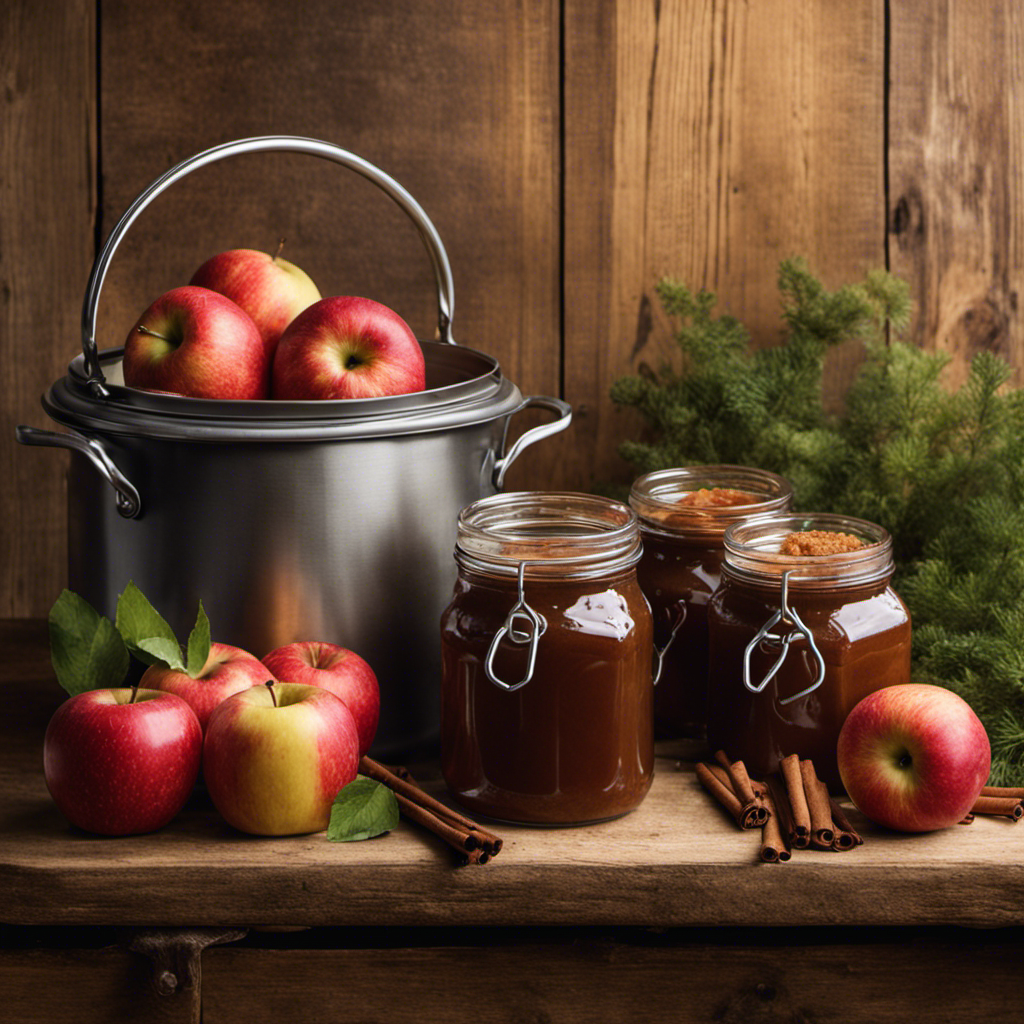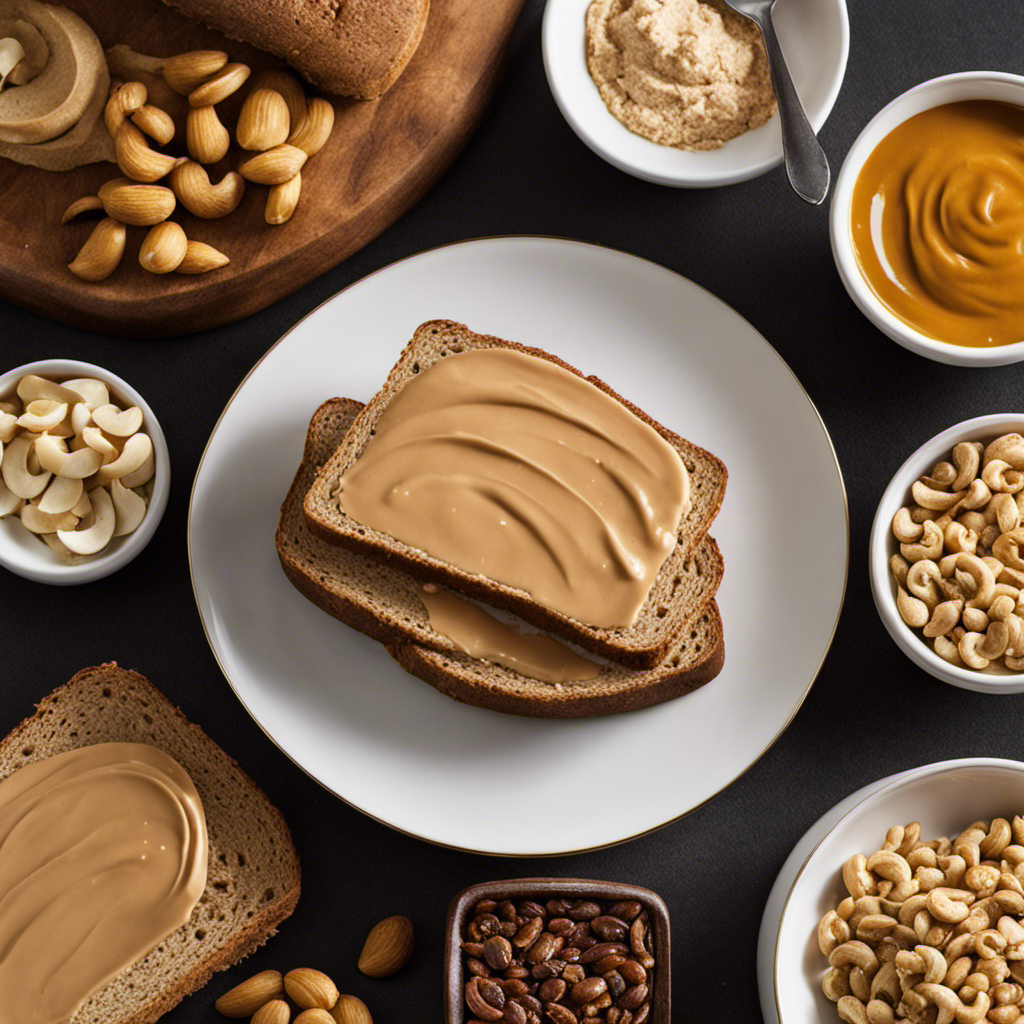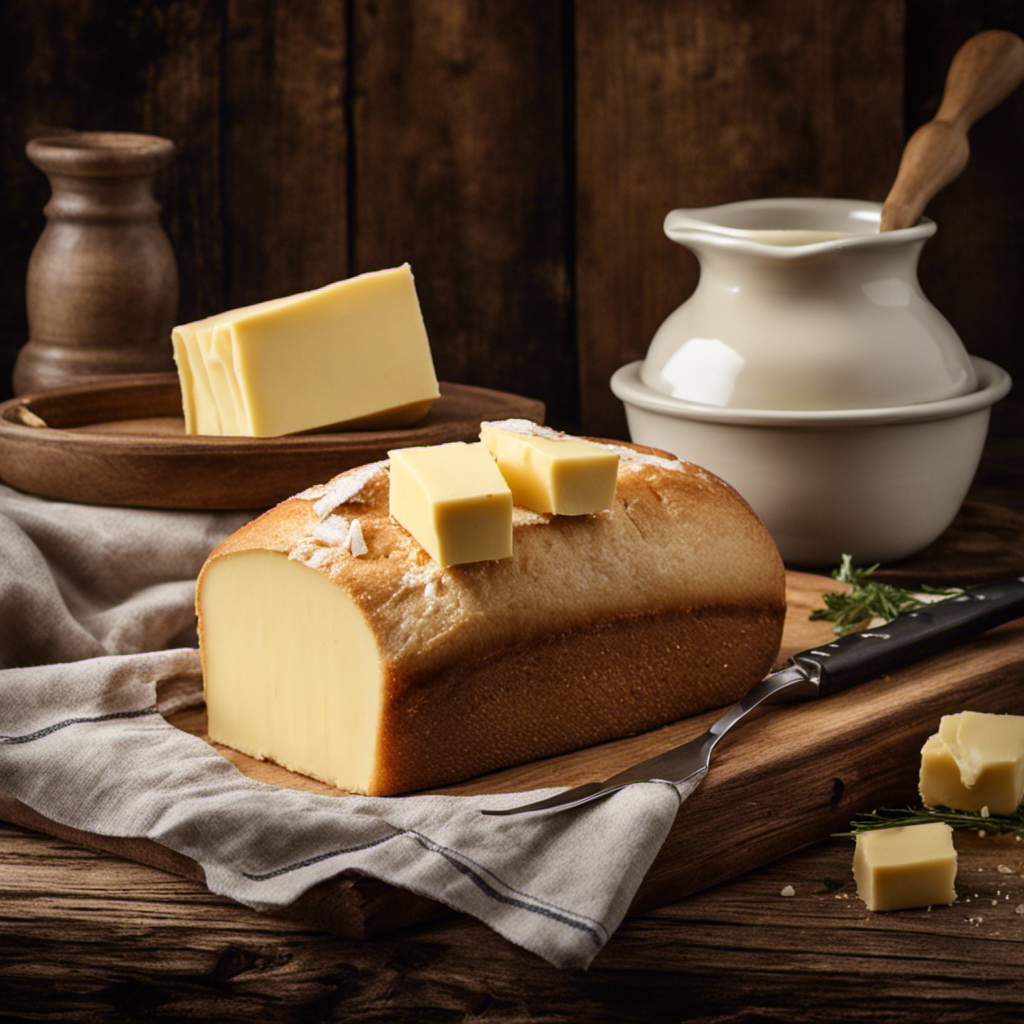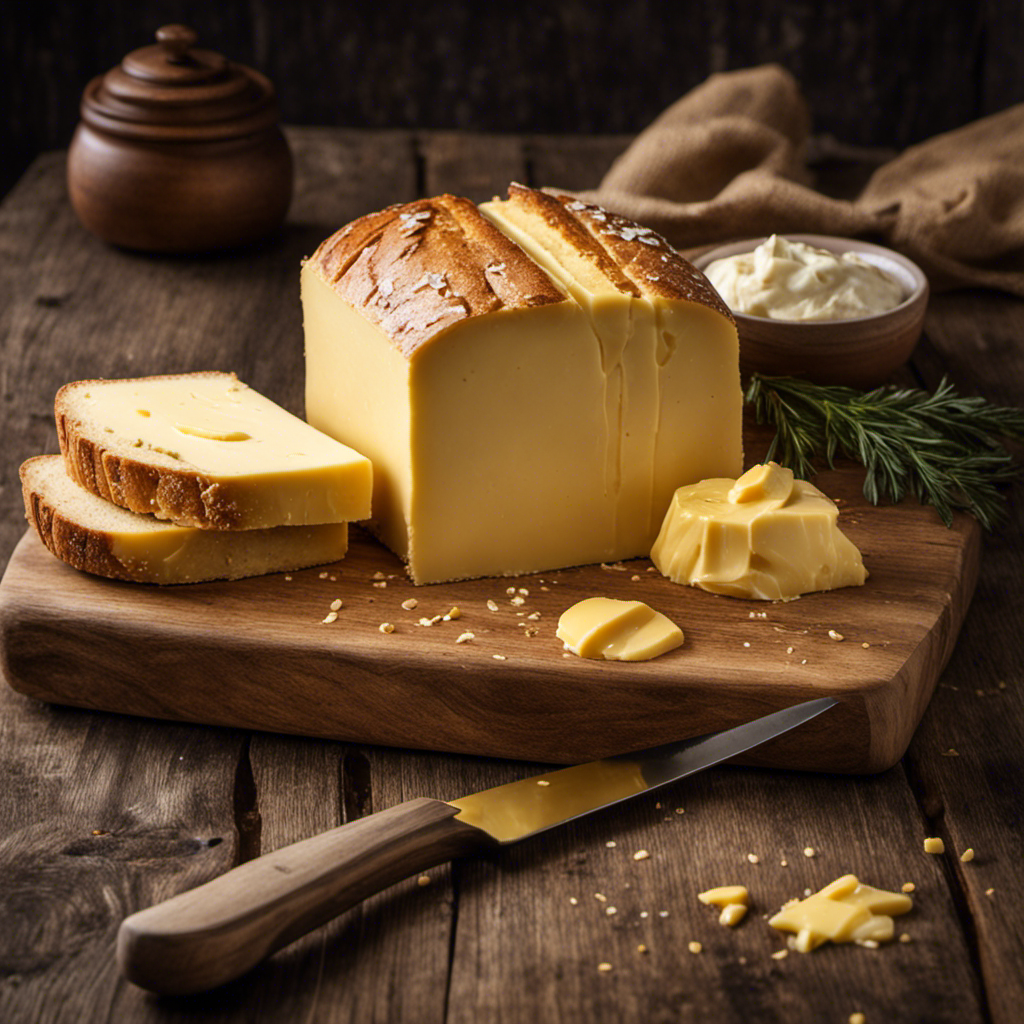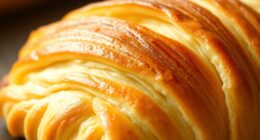I have always been intrigued by the unique name of bread and butter pickles, as someone with a strong interest in pickles. How did this tangy and sweet treat come to be associated with bread and butter?
In this article, we will delve into the historical origins, culinary uses, and cultural significance of this beloved pickle variety. By understanding the name’s origin story, we will gain a deeper appreciation for the unique combination of flavors that make bread and butter pickles a favorite condiment for many.
Key Takeaways
- Bread and butter pickles were coined during the Great Depression and were used as a staple food by farmers.
- They represent resilience and resourcefulness in American history and have deep cultural significance in various cultures.
- The pickling process involves immersing cucumbers in a sweet and tangy brine made of vinegar, sugar, and spices like mustard seeds and turmeric.
- Bread and butter pickles are versatile ingredients and can be used in a variety of dishes, adding tangy flavor and crunch while balancing out rich and fatty flavors.
Historical Origins
So, why exactly are they called bread and butter pickles? Well, let me tell you – the term actually dates back to the early 20th century when they were first made popular by farmers who used them as a staple food during the Great Depression.
Pickling techniques have long been used as a way to preserve food, and during times of economic hardship, it became crucial to find ways to make food last longer. The farmers found that pickling cucumbers in a sweet and tangy brine made them a delicious and cost-effective addition to their meals.
The name ‘bread and butter pickles’ was coined because these pickles became so essential that they were often paired with bread and butter, providing sustenance during difficult times.
Today, these pickles have cultural significance, representing a time of resilience and resourcefulness in American history.
Pickling Tradition
The tradition of pickling has a long history and is deeply ingrained in various cultures. Pickling techniques have evolved over time, resulting in a wide array of regional variations.
From the spicy kimchi of Korea to the tangy sauerkraut of Germany, pickling has become a way to preserve and enhance the flavors of various foods. Different regions have developed their own unique methods and ingredients for pickling, creating a diverse range of flavors and textures.
For example, in Japan, pickled ginger is a staple accompaniment to sushi, while in India, pickled mangoes are a popular delicacy. These regional variations showcase the creativity and adaptability of pickling as a culinary practice.
The rich history and diverse techniques of pickling contribute to the sweet and tangy flavor that makes it so beloved.
Sweet and Tangy Flavor
When it comes to understanding the pickling process, it’s important to delve into the explanation and origins of this traditional recipe.
The pickling process involves preserving food by immersing it in a brine or vinegar solution, which creates a tangy and flavorful result.
This age-old technique has its origins in ancient civilizations, where people found ways to prolong the shelf life of their food and enhance its taste.
Pickling Process Explanation
During the pickling process, cucumbers are soaked in a brine solution to create bread and butter pickles. These pickles are known for their sweet and tangy flavor, which comes from the combination of vinegar, sugar, and spices used in the brine. The pickling recipes for bread and butter pickles often include ingredients like mustard seeds, turmeric, and onions, which add depth and complexity to the flavor profile. Vinegar is a key component in the pickling process as it acts as a preservative, helping to extend the shelf life of the pickles. The acidity of the vinegar also adds a sharpness to the pickles, balancing out the sweetness of the sugar. Overall, the pickling process transforms ordinary cucumbers into delicious bread and butter pickles that are perfect for sandwiches, burgers, or enjoying on their own as a tasty snack.
| Ingredients | Amount |
|---|---|
| Cucumbers | 2 lbs |
| White vinegar | 2 cups |
| Sugar | 1 cup |
| Spices (mustard seeds, turmeric, onions) | To taste |
Traditional Recipe Origins
To make traditional bread and butter pickles, you can use a combination of cucumbers, white vinegar, sugar, and spices like mustard seeds, turmeric, and onions to achieve a sweet and tangy flavor. These pickles are a classic favorite in many households and have a rich history rooted in traditional techniques and regional variations.
Here are some interesting facts about the origins of this beloved pickle recipe:
-
Traditional techniques: Bread and butter pickles have their roots in old-fashioned pickling methods, where vegetables were preserved in a mixture of vinegar, sugar, and spices. This process not only enhanced the flavor but also extended the shelf life of the cucumbers.
-
Regional variations: Different parts of the world have their own take on bread and butter pickles. For example, in the Southern United States, the pickles are typically sweeter with a stronger emphasis on the use of sugar. In contrast, in European countries like Germany, the pickles tend to be more tangy and may include additional spices like dill or celery seeds.
-
Family recipes: Many families have their own treasured bread and butter pickle recipes that have been passed down through generations. These recipes often incorporate unique ingredients or techniques that have been perfected over time, adding a personal touch to this classic pickle dish.
Culinary Uses
When it comes to pickling, understanding the various techniques is key to achieving delicious results.
In this discussion, I will explain the different pickling techniques, from quick pickling to fermentation, and how they can be used to preserve and enhance the flavors of different ingredients.
Additionally, we will explore the versatility of pickled foods in a wide range of dishes, from sandwiches to salads, and how they can add a unique tang and crunch to any meal.
Lastly, we will delve into the world of flavor profiles in pickled foods, discussing the balance of acidity, sweetness, and spice, and how different ingredients and spices can create a wide array of taste sensations.
Pickling Techniques Explained
If you’re wondering why it’s called bread and butter pickles, one of the pickling techniques used involves using a brine made with sugar and vinegar. The pickling process is a preservation method that has been used for centuries to extend the shelf life of fruits and vegetables. There are different pickling methods, but for bread and butter pickles, the most common technique is the brining method.
This involves soaking cucumbers in a mixture of vinegar, sugar, and spices to create a sweet and tangy flavor. The type of vinegar used in bread and butter pickles can vary, but the most popular types are white vinegar and apple cider vinegar. The sugar and vinegar work together to create a balanced and delicious brine that gives bread and butter pickles their distinct taste.
Here are three interesting facts about pickling techniques:
-
Fermentation: This method involves creating an environment for beneficial bacteria to convert sugars into lactic acid, which gives the pickles their tangy flavor. This process can take several weeks and results in a unique texture and taste.
-
Quick Pickling: This method is ideal for those who want to enjoy pickles without waiting for the fermentation process. Quick pickling involves immersing the cucumbers in a vinegar-based brine that is heated and then cooled before use. This method yields pickles with a crisp texture and a slightly milder flavor.
-
Refrigerator Pickling: As the name suggests, this method involves pickling cucumbers in a vinegar-based brine and storing them in the refrigerator. This technique allows for a shorter pickling time and produces pickles that are ready to eat within a few days.
Versatility in Dishes
Versatility in dishes can be achieved by incorporating pickled vegetables into a variety of recipes. Pickled vegetables add a burst of tangy flavor and a delightful crunch to any dish, making them a versatile ingredient in the culinary world.
From sandwiches and salads to stir-fries and even cocktails, the possibilities are endless. When it comes to culinary pairings, pickled vegetables can complement a wide range of flavors. Their acidity and briny taste can balance out rich and fatty dishes, adding a refreshing element.
Additionally, pickled vegetables offer several health benefits. They are low in calories, fat-free, and packed with vitamins and minerals. The pickling process also increases the probiotic content, promoting a healthy gut.
Flavor Profiles Explored
Now that we’ve discussed the versatility of bread and butter pickles in various dishes, let’s delve into the intriguing world of flavor profiles.
Flavor combinations play a significant role in determining our taste preferences, and bread and butter pickles are no exception. These pickles are known for their unique sweet and tangy taste, which is achieved through a careful balance of ingredients.
Here are some interesting flavor combinations to consider:
-
Sweet and Tangy: The combination of sugar and vinegar creates a delightful contrast of flavors.
-
Crunchy and Juicy: The crispiness of the pickles paired with their juicy texture adds a satisfying element to any dish.
-
Savory and Spicy: Adding spices like mustard seeds and turmeric gives the pickles a savory kick that balances out the sweetness.
By experimenting with these flavor profiles, you can create a wide range of dishes that cater to your taste preferences.
Popular Variations
You might be wondering, ‘What are some popular variations of bread and butter pickles?’
Well, let me tell you about a few that I’ve come across.
One popular recipe is the classic bread and butter pickle, made with cucumbers, onions, vinegar, sugar, and spices. This version has a sweet and tangy flavor that pairs perfectly with sandwiches and burgers.
Another variation is the spicy bread and butter pickle, which adds a kick of heat with the addition of jalapenos or red pepper flakes.
For those who prefer a more unique flavor, there are also bread and butter pickles made with different types of vegetables, such as zucchini or beets. These variations offer a twist on the traditional recipe and allow for different flavor preferences to be satisfied.
Cultural Significance
The cultural significance of these pickles lies in their ability to add a burst of flavor to a variety of dishes.
Bread and butter pickles have long been a staple in many cultural traditions, particularly in the United States. These pickles are known for their sweet and tangy taste, which pairs well with sandwiches, burgers, and even salads.
Regional variations of bread and butter pickles can be found throughout the country, with different ingredients and techniques used to create unique flavors. Some regional variations include the addition of spices like mustard seeds or cinnamon, while others may use different types of cucumbers or vinegar.
These variations reflect the diverse culinary traditions and preferences of different regions, adding to the cultural significance of bread and butter pickles.
The Name’s Origin Story
The origin of their name can be traced back to their sweet and tangy taste that pairs well with a variety of dishes. Bread and butter pickles got their name from their popularity during the Great Depression era. This was a time when people had to make do with what they had, and bread and butter pickles were a cost-effective way to add flavor to meals.
The name itself comes from the idea that these pickles were so delicious and versatile that they could be eaten with every meal, just like bread and butter. While the exact origins of the name may vary, it is clear that the term ‘bread and butter pickles’ has become synonymous with these sweet and tangy treats.
Whether enjoyed on a sandwich or as a side dish, the origin of their name adds to the folklore surrounding these beloved pickles.
Frequently Asked Questions
How Long Do Bread and Butter Pickles Typically Last When Stored Properly?
When stored properly, bread and butter pickles typically last for several months. They can be made at home by combining cucumbers, onions, vinegar, sugar, and spices. They can be used in various recipes, such as sandwiches, salads, and appetizers.
Can Bread and Butter Pickles Be Made With Cucumbers of Any Size?
Yes, bread and butter pickles can be made with cucumbers of any size. The pickling process involves slicing the cucumbers, soaking them in a vinegar and sugar mixture, and adding spices. Some of the best recipes include onions and mustard seeds.
Are Bread and Butter Pickles a Healthy Snack Option?
Bread and butter pickles are a tasty snack option, but their nutritional value depends on the ingredients used. While cucumbers are low in calories and fat, the sugar and vinegar used in the pickling process may affect their overall healthiness.
What Is the Difference Between Bread and Butter Pickles and Dill Pickles?
Bread and butter pickles are sweeter and tangier than dill pickles. They’re made with cucumbers, onions, and a sweet and sour brine. They’re great for sandwiches or as a side dish. Try different pickle flavors in your recipes!
Are Bread and Butter Pickles Only Popular in the United States, or Are They Enjoyed in Other Countries as Well?
Bread and butter pickles are enjoyed not only in the United States but also in other countries. It’s fascinating how pickle preferences vary across cultures, adding richness to our culinary experiences.
Conclusion
In conclusion, the name ‘bread and butter pickles’ has its roots in history and culinary tradition. These sweet and tangy pickles have become a staple in many households, adding a delightful crunch to sandwiches and burgers.
With various popular variations, such as adding onions or jalapenos, these pickles have become a versatile ingredient in many recipes. Their cultural significance cannot be overlooked, as they have been enjoyed for generations.
So next time you bite into a bread and butter pickle, savor the taste and appreciate the rich history behind this beloved condiment. It truly is the butter on the bread of pickles.



